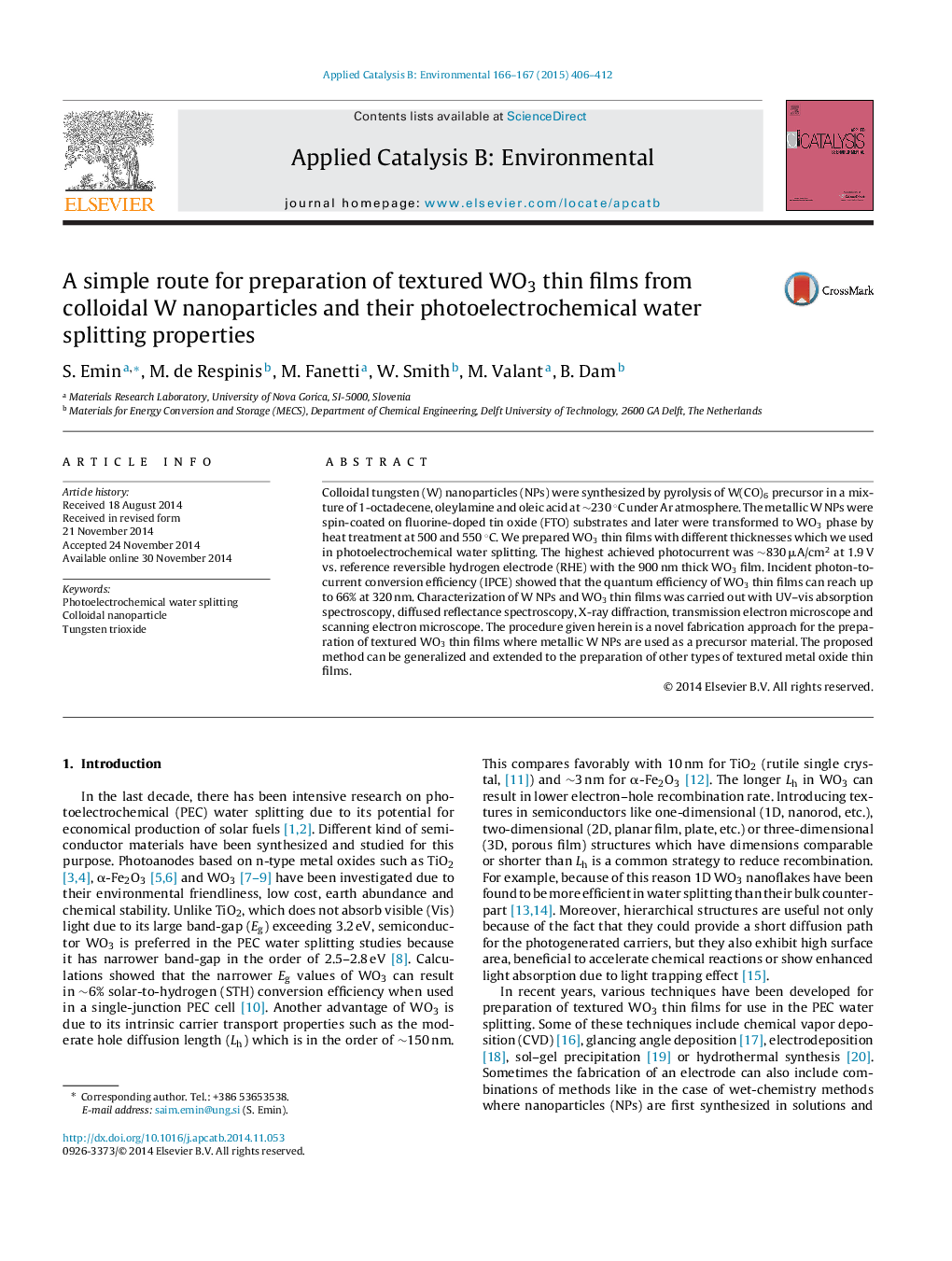| Article ID | Journal | Published Year | Pages | File Type |
|---|---|---|---|---|
| 45734 | Applied Catalysis B: Environmental | 2015 | 7 Pages |
•W nanoparticles were synthesized via a wet-chemistry method.•Spin-coating of W nanoparticles onto FTO substrates yielded uniform W films.•Oxidation of W films at high temperature allowed the preparation of textured WO3 films.•The WO3 films were used as photoanode in photoelectrochimical water splitting.
Colloidal tungsten (W) nanoparticles (NPs) were synthesized by pyrolysis of W(CO)6 precursor in a mixture of 1-octadecene, oleylamine and oleic acid at ∼230 °C under Ar atmosphere. The metallic W NPs were spin-coated on fluorine-doped tin oxide (FTO) substrates and later were transformed to WO3 phase by heat treatment at 500 and 550 °C. We prepared WO3 thin films with different thicknesses which we used in photoelectrochemical water splitting. The highest achieved photocurrent was ∼830 μA/cm2 at 1.9 V vs. reference reversible hydrogen electrode (RHE) with the 900 nm thick WO3 film. Incident photon-to-current conversion efficiency (IPCE) showed that the quantum efficiency of WO3 thin films can reach up to 66% at 320 nm. Characterization of W NPs and WO3 thin films was carried out with UV–vis absorption spectroscopy, diffused reflectance spectroscopy, X-ray diffraction, transmission electron microscope and scanning electron microscope. The procedure given herein is a novel fabrication approach for the preparation of textured WO3 thin films where metallic W NPs are used as a precursor material. The proposed method can be generalized and extended to the preparation of other types of textured metal oxide thin films.
Graphical abstractFigure optionsDownload full-size imageDownload as PowerPoint slide
